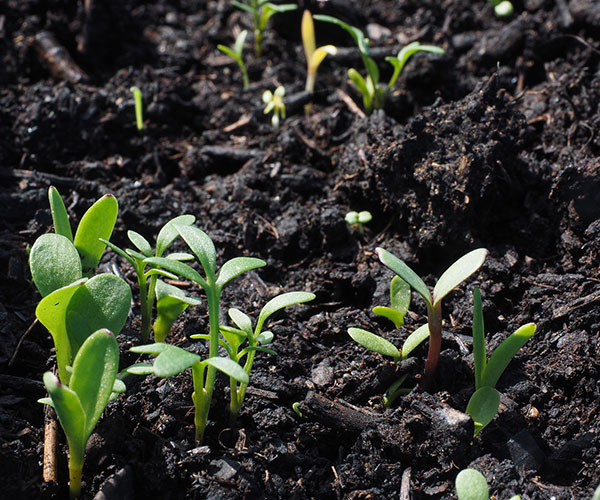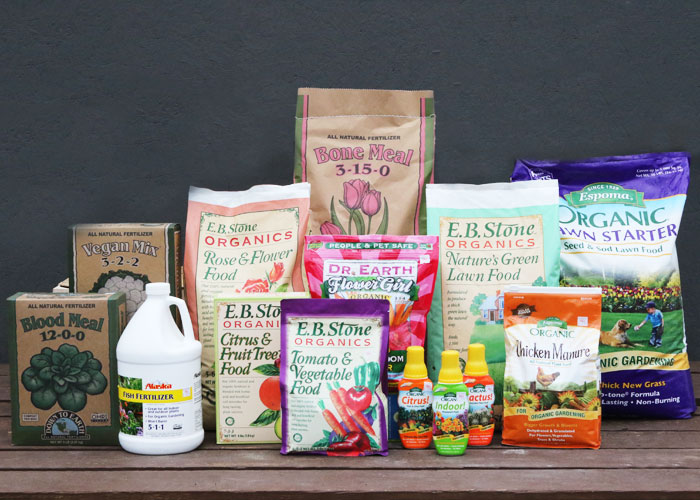Feed Your Soil, Feed Your Plants: build a soil ecosystem
A garden is a living ecosystem that starts with the soil. Each handful of healthy soil contains billions of microscopic fungi, bacteria, and animals that are hard at work transforming organic material into food your plants can use.
That’s the secret to organic soil fertility: You feed your soil microbes, and the microbes feed your plants. It can require a bit of a mental shift, but gardeners who literally start "from the ground up" will be rewarded with vibrant, thriving gardens.
 The importance of building healthy soil can also reach beyond your own garden. Gardeners can do a lot to help mitigate climate change, and rebuilding soil -- the planet's most important carbon sink -- is a great place to start.
The importance of building healthy soil can also reach beyond your own garden. Gardeners can do a lot to help mitigate climate change, and rebuilding soil -- the planet's most important carbon sink -- is a great place to start.
But what makes for a healthy soil ecosystem? How can you help your microbes thrive? There are three main inputs your garden needs every year: compost, lime, and organic fertilizer. Each one fills a different role in your garden.
COMPOST Living Soil Structure
Compost is the foundation of healthy soil, but its particular role in a garden’s web of life is often misunderstood. Adding compost is not about nutrients. In fact, by the time organic matter has broken down into well-rotted compost (which is what you want), most of the plant nutrients have already been used up.
Instead, compost is all about soil structure. Compost inoculates your soil with diverse microbial life, helps create beneficial air and water pockets, and improves your soil’s ability to store and then gradually release both water and nutrients. All of this creates the foundation for a thriving soil ecosystem.
Sky Nursery Recommendation: For vegetable gardens, add about half an inch to an inch of compost each year, and gently incorporate it with the top few inches of your soil. For perennials, trees, and shrubs, simply add a little compost on top of the soil each year.
LIME Living Soil pH Balance
Lime is nothing more or less than crushed limestone, which is made up mostly of calcium and magnesium. It provides needed micronutrients for plants and helps to balance soil pH, also known as acidity.
Heavy winter rains and the particular make-up of our PNW dirt causes us to have particularly acidic soils that can be balanced out by adding lime each year. This process of reducing soil acidity is sometimes called "sweetening" the soil.
Just like people and other living things, plants have ideal acidity ranges they like to live in. For most vegetables and ornamentals, that range is right around neutral – a pH of about 6-7. When the soil gets too acidic, plants will not be able to properly take up nutrients, and their overall health will decline. A general “failure to thrive” despite apparently proper placement and care can sometimes be a result of acidic soil.
Sky Nursery Recommendation: If you can only add one kind of lime, dolomite lime is best because it contains both calcium and magnesium. However, a blend of one part gypsum (calcium sulfate) and one part dolomite lime may have a better balance between the two nutrients, especially for the clay soils that are common in this region.
The exact amount of lime you need will depend on your current soil pH, soil type, plants, and goals. To get started, a good general plan is to broadcast about 1 cup of your lime mixture per 50 square feet and gently rake it in to the top layer of soil. If you want to get more specific, the best way to start is with a pH test.
ORGANIC FERTILIZER Living Soil Food
Once you’ve welcomed hungry microbes to your soil with compost and the right pH balance, it’s time to serve up a big feast of organic fertilizer. In return, the microbes will happily feed your plants.

Different foods for different gardens! We carry organic fertilizers for a wide variety of purposes and styles.
Only organic fertilizers are microbe food. Synthetic fertilizers, in contrast, are human-made compounds that dissolve in water and are available to plants instantly, without feeding soil microbes. Think of synthetic fertilizers as "plant candy." They can give plants a quick shot of instant nutrients, but they leave the system quickly and can be unhealthy in large amounts.
If you want to build a truly healthy soil ecosystem for the long-term, organic fertilizers are the way to go. Organic fertilizers are blends of natural materials that are high in the nutrients plants crave. A few common ingredients include seed meals (byproducts of seed oil production), kelp, and minerals like potassium and nitrogen. Some organic fertilizers also contain byproducts of animal agriculture, so be sure to check the label if you're looking for a vegan blend.

Sky Nursery Recommendation: You can purchase ready-made mixes, buy single ingredients in bulk to create a custom blend, or even make your own organic fertilizers from scratch. For example, fermented comfrey is an age-old homemade fertilizer that is simple (if a little bit stinky) to make. Beyond comfrey, there are many other DIY options to try, as well.
As microbes break these materials down slowly over time, your plants will be able to access exactly the nutrients they need, exactly when they’re needed. Very little fertilizer will be wasted, and there will be no potentially toxic runoff from excess nutrients. As an added bonus, it is nearly impossible to over-fertilize your plants.
LIVING SOIL Feeds Your Plants
Beyond these basics, there are many more wonderful ways to care for your garden's soil life, from cover cropping, to producing your own worm compost, to different styles of raised bed gardening. Start small, and expand and experiment from there to find out what works best for your unique garden. Your microbes and other soil life will thank you, and your soil ecosystem will only improve with time.
Originally published: June 16, 2016
Article by Hannah Madrone
Edited by Sarah Oakes
